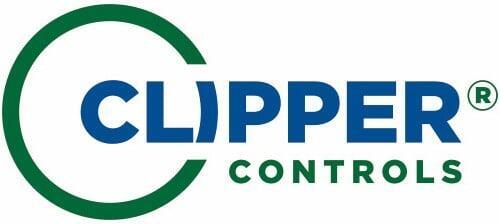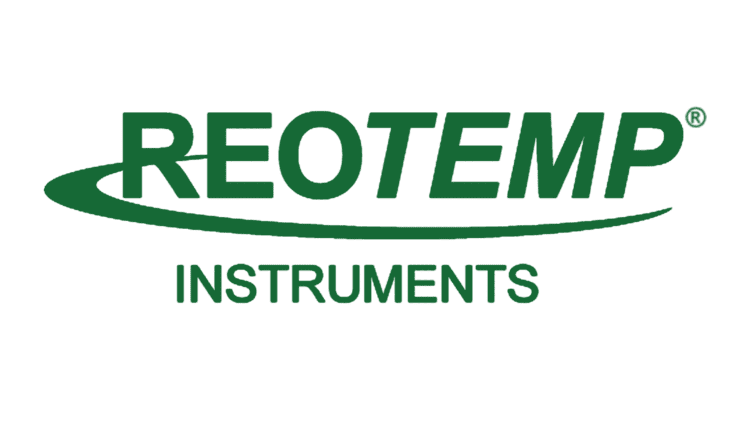
Pressure Instrumentation
At Clipper Controls, we provide precision pressure instrumentation engineered to support demanding industrial applications. Our portfolio includes pressure transmitters, gauges, and switches designed for accurate measurement of absolute, gauge, and differential pressure in gases, liquids, and steam. From process automation and safety systems to environmental compliance and equipment protection, we deliver reliable solutions that help our customers maintain control, improve efficiency, and meet industry standards with confidence.
Pressure Transmitters
Our transmitters support critical operations by converting pressure into standardized electrical signals for integration with control systems, SCADA platforms, or data loggers. With models available for absolute, gauge, and differential pressure, we provide solutions for everything from fluid flow and level measurement to filter monitoring and process safety. Each transmitter is selected to match application-specific requirements for pressure range, output type, environmental conditions, and media compatibility.
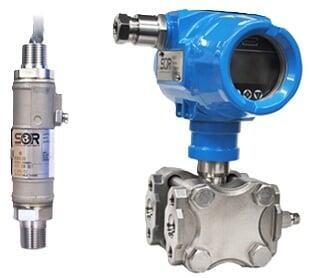
Types of Pressure Transmitters We Offer
When it comes to pressure transmitters, finding the right fit depends on your process conditions, output needs, and what you're measuring—whether it’s gas, liquid, or steam. At Clipper Controls, we know the options can get technical, but we’re here to make it simple. We’ll help you narrow it down based on accuracy, durability, and compatibility with your system. Below are the types of pressure transmitters we offer, each selected to deliver reliable performance in real-world applications. And if you’re unsure where to start, just reach out—we’re happy to help.
Pressure Reference Type
- Absolute Pressure Transmitters
- Gauge Pressure Transmitters
- Differential Pressure Transmitters
Sensing Technology
- Capacitive
- Piezoresistive (Strain Gauge)
- Resonant Wire or Silicon
- Piezoelectric
- Optical / Fiber Optic
Mounting Configuration
- Direct-Mount
- Remote-Sealed / Capillary Systems
- Multivariable Transmitters
Talk to an Expert
Pressure Switches
We supply high-performance pressure switches that provide dependable control and protection in a wide range of industrial systems. Designed to activate or deactivate circuits based on user-defined pressure thresholds, these switches are essential for applications such as pump control, alarm triggering, and safety shutdown systems. We offer both mechanical and electronic pressure switches with adjustable setpoints, rugged enclosures, and compatibility with corrosive or high-pressure media. Whether you're managing hydraulic systems, compressed air, or process gases, our products helps ensure reliable operation through precise and responsive switching solutions.
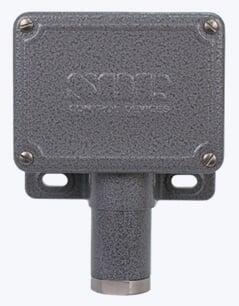
Types of Pressure Switches We Offer
Pressure switches might seem straightforward, but choosing the right one can be the key to keeping your system protected and responsive. At Clipper Controls, we take the time to understand your application—whether you need fast switching, wide pressure ranges, or tough enclosures for harsh environments. We offer a variety of pressure switch types to match different system needs, and we’re always ready to help you find the best option for your setup. Take a look at the categories below to see what we offer, and don’t hesitate to reach out with questions.
Pressure Reference Type
- Gauge Pressure Switch
- Vacuum Pressure Switch
- Differential Pressure Switch
- Absolute Pressure Switch
- Sealed Pressure Switch
Adjustment Types
- Adjustable
- Fixed
- Programmable
- Remote Setpoint
Mounting / Installation
- Threaded
- Flanged
- Panel Mount
- DIN Rail
- Surface Mount
- Inline
Specific Application
- Hydraulic Pressure Switch
- Air Pressure Switch
- Water Pressure Switch
- Oil Pressure Switch
- Steam Pressure Switch
- Refrigeration Pressure Switch
- HVAC Pressure Switch
- Pump Pressure Switch
- Compressor Pressure Switch
- Boiler Pressure Switch
- Safety Pressure Switch
Electrical Configuration & Output Type
- SPDT
- DPDT
- Normally Open
- Normally Closed
- Electronic
- Solid State
- Analog
- Digital
- 4-20mA
- IO-Link
Mechanical Design
- Diaphragm
- Piston
- Bourdon Tube
- Bellows
- MEMS
- Reed Switch
- Explosion Proof
- Hermetically Sealed
Voltage / Power Supply
- 12v
- 24v
- 120v
- 240v
- Low Voltage
Talk to an Expert
Pressure Gauges
We offer a comprehensive selection of pressure gauges designed for reliable visual indication of pressure in a variety of industrial systems. These instruments are essential for monitoring process conditions, verifying system performance, and ensuring safety in applications involving gases, liquids, and steam. We offer mechanical and digital gauges in a wide range of pressure ranges, dial sizes, and connection types—each built to withstand the demands of their operating environments. Whether used for routine maintenance, calibration reference, or continuous system monitoring, our pressure gauges deliver the accuracy and durability needed for dependable performance.
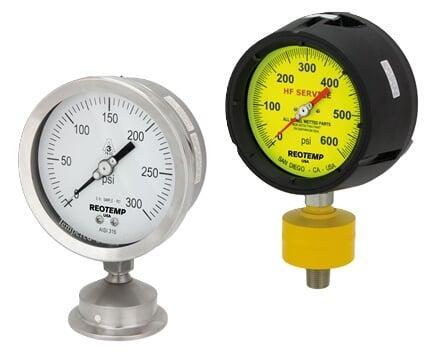
Types of Pressure Gauges We Offer
Finding the right pressure gauge can make all the difference in keeping your system operating safely and efficiently. At Clipper Controls, we’re here to help you choose a gauge that not only fits your technical specs but also stands up to the conditions of your application. Whether you're working with steam, gas, or liquid—and whether you need something rugged for a tough environment or precise for a critical process—we've got you covered. Below are the types of pressure gauges we offer, and we’re always just a call or email away if you’d like help picking the right one.
Pressure Reference Type
- Gauge Pressure
- Vacuum Pressure
- Compound Pressure
- Absolute Pressure
- Differential Pressure
Range and Scale Units
- 0-15 psi
- 0-100 psi
- 0-300 psi
- 0-1000 psi
- Pressure Gauge in bar / kPa / MPa ? inches of Hg / mmWC
Certification or Compliance
- NIST-Traceable
- ASME B40.100 Compliant
- UL / CSA Rated
- CE Marked
- SIL-Rated
Specific Application
- Hydraulic Pressure Gauge
- Air Pressure Gauge
- Water Pressure Gauge
- Steam Pressure Gauge
- Gas Pressure Gauge
- Refrigeration Pressure Gauge
- Oil Pressure Gauge
- Compressor Pressure Gauge
- Boiler Pressure Gauge
- Fuel Pressure Gauge
- Well Pump Pressure Gauge
Mechanical Design
- Bourdon Tube
- Diaphragm
- Bellows
- Capsule
- Digital
Material or Environment
- Stainless Steel
- Brass
- Plastic Case
- Liquid-Filled
- Dry
- Explosion-Proof
- Weatherproof / IP-Rated
- Sanitary
Talk to an Expert
Pressure Accessories
Diaphragm Seals
We sell diaphragm seals designed to protect pressure instruments from tough process conditions—like corrosive media, extreme temperatures, or sanitary environments. These seals isolate the sensing element while still allowing accurate pressure readings through a fluid-filled system. Our selection includes flush, inline, and extended diaphragm seals to meet the needs of various industries, including chemical processing, food and beverage, and pharmaceuticals. If your application calls for extra protection, we’ll help you choose the right seal to match your instrument and process.
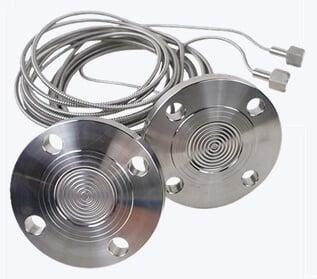
Valve Manifolds
We offer valve manifolds that make it easy to install, isolate, and maintain pressure transmitters—especially differential pressure setups. Our range includes 2-valve, 3-valve, and 5-valve manifolds in multiple configurations and materials to suit your system’s pressure, media, and safety requirements. These manifolds simplify calibration and service without interrupting the process or compromising measurement accuracy. If you need help selecting the right manifold for your application, our team is here to assist.
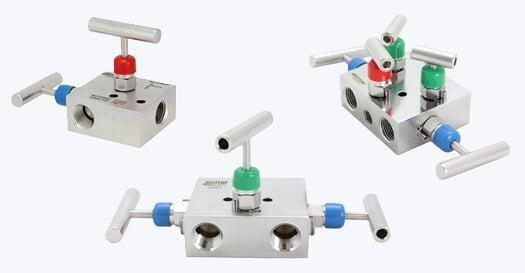
Talk to an Expert
I/P and P/I Pressure Transmitters
Current-to-Pressure (I/P) Transmitter
We offer current-to-pressure (I/P) transmitters that convert electrical control signals—typically 4–20 mA—into proportional pneumatic output signals. These devices are essential for interfacing electronic control systems with pneumatic actuators, valves, and other air-driven equipment. Our I/P transmitters provide fast, stable, and accurate signal conversion, making them ideal for process control applications where precise modulation of air pressure is required. With options for field or panel mounting, explosion-proof ratings, and various output ranges, we can help you find the right I/P solution to integrate seamlessly with your control architecture.
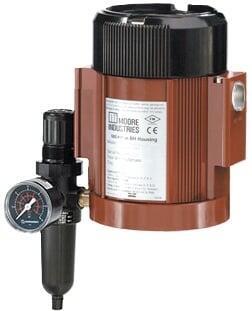
Pressure-to-Current (P/I) Transmitter
Our pressure-to-current (P/I) transmitters perform the reverse function of I/P devices—converting a pneumatic pressure input into a corresponding electrical signal. These transmitters are often used to relay pressure readings back to PLCs, DCS systems, or remote monitoring stations in processes where traditional pressure sensors can’t be used. We provide P/I transmitters with high accuracy, compact designs, and configurable output ranges to match your system requirements. Whether you need to monitor pneumatic line pressure, air supply stability, or process feedback, we offer dependable P/I solutions for seamless data integration.

Talk to an Expert
Need Help?
Our Crew is Here To Serve You!
Pressure Instrumentation Applications
Seal Ring for Pump Monitoring Applications
In pump monitoring applications, maintaining accurate and reliable pressure measurement is essential for protecting equipment and ensuring efficient operation. The Reotemp Seal Ring provides a clean, flush-mounted interface for diaphragm seals, making it an excellent choice for connecting pressure transmitters to pump discharge lines or suction ports. This setup helps prevent buildup of solids or debris, reduces the risk of seal damage, and allows for quick instrument removal during maintenance. Ideal for systems that require frequent cleaning or operate under harsh conditions, the Reotemp Seal Ring supports consistent pressure readings while extending the service life of both the seal and the instrument.
Well Level Monitoring
Monitoring well level accurately is essential for managing groundwater resources, optimizing pumping schedules, and protecting pump equipment from running dry. We offer pressure-based level monitoring solutions from trusted manufacturers like Reotemp Instruments, SOR Controls Group, and Moore Industries—each known for their durability and reliability in challenging field conditions. Submersible pressure transmitters and sealed gauge devices provide continuous level readings, even in deep or narrow wells. These instruments are built to withstand fluctuating pressures, temperature extremes, and corrosive groundwater, ensuring dependable performance in both municipal and industrial water systems. Whether you're monitoring production wells, injection wells, or environmental observation wells, we can help you select the right sensor for long-term, low-maintenance operation.
Differential Pressure Flow Measurement
Differential pressure (DP) flow measurement is a proven method for determining flow rates in closed pipe systems using primary elements like orifice plates, venturis, or pitot tubes. We offer DP flow solutions featuring high-accuracy transmitters and accessories from SOR Controls Group, Reotemp Instruments, and Moore Industries—brands known for their precision and ruggedness in process environments. These transmitters measure the pressure drop across a restriction to calculate flow, and are commonly used in steam, gas, and liquid systems across industries like power generation, chemical processing, and water treatment. With options for integrated manifold assemblies, remote mounting, and hazardous area approvals, our DP flow solutions are engineered for both reliability and ease of maintenance in demanding applications.
Terms & Definitions
- Absolute Pressure
- Pressure measured relative to a perfect vacuum. It includes atmospheric pressure and is often used in high-accuracy applications.
- Ambient Pressure
- The pressure of the surrounding environment where the instrument is installed, often used as a reference point in pressure measurement.
- Calibration
- The process of adjusting an instrument to ensure its output corresponds accurately to known pressure values within a specified range.
- Compound Gauge
- A pressure gauge that measures both vacuum (negative pressure) and positive pressure, commonly used in HVAC and pump applications.
- Dead Band (Hysteresis)
- The range through which pressure can change without causing a change in the switch state, important for avoiding chatter in pressure switches.
- Diaphragm Seal
- A protective barrier filled with transmission fluid, used to isolate pressure instruments from process media that may be corrosive, viscous, or sanitary.
- Differential Pressure (DP)
- The difference in pressure between two points, used in flow, level, and filter monitoring applications.
- Explosion-Proof
- A housing classification that contains any ignition within the device, preventing it from igniting flammable materials in the surrounding atmosphere.
- Gauge Pressure
- Pressure measured relative to atmospheric pressure (0 psi at atmospheric conditions). Most common in general industrial use.
- I/P (Current-to-Pressure) Transmitter
- A device that converts an electrical signal (typically 4–20 mA) into a proportional pneumatic pressure output for valve and actuator control.
- Isolation Valve
- A valve used to separate an instrument from the process for maintenance, calibration, or safety purposes without shutting down the entire system.
- Line Pressure
- The pressure of the fluid within a pipeline under operating conditions. Instruments must be rated to withstand this pressure safely.
- Manifold Valve
- A multi-port valve assembly that allows for isolating, equalizing, and venting pressure instruments such as differential transmitters.
- Media Compatibility
- The ability of a pressure instrument’s wetted parts to resist corrosion or degradation when exposed to the process media.
- Overpressure Protection
- Design features or accessories that protect pressure instruments from being damaged by exposure to excessive pressure.
- P/I (Pressure-to-Current) Transmitter
- A device that converts pneumatic pressure input into a corresponding electrical signal (e.g., 4–20 mA) for system monitoring or control.
- Pressure Gauge
- A mechanical or digital device that provides a visual indication of pressure, typically via dial or screen. Used for monitoring and maintenance.
- Pressure Rating
- The maximum pressure an instrument or component can safely withstand during operation. Exceeding this may result in damage or failure.
- Pressure Sensor
- The sensing element within a pressure instrument that detects and responds to changes in applied pressure.
- Pressure Switch
- A device that triggers an electrical contact open or closed when the pressure crosses a set threshold. Used for alarms and control systems.
- Pressure Transducer
- Converts pressure into an electrical signal, typically voltage. Often used where shorter cable runs and low-power consumption are needed.
- Pressure Transmitter
- Converts pressure into a current signal (typically 4–20 mA) for reliable, long-distance transmission to controllers or monitoring systems.
- Rangeability
- The ratio between the maximum and minimum measurable pressures that an instrument can accurately detect. Important for dynamic systems.
- Remote Seal
- A diaphragm seal mounted away from the transmitter using a capillary tube, used when direct mounting is impractical due to heat or inaccessibility.
- Seal Ring
- A mounting interface that provides a flush connection for diaphragm seals, commonly used in sanitary, clean-in-place, or pump applications.
- Setpoint
- The defined pressure value at which a switch or control function is triggered. Adjustable in most pressure switch models.
- Span
- The calibrated operating range between the minimum and maximum measurable pressure values for a given instrument.
- Static Pressure
- The pressure exerted by a fluid at rest within a system. Often used as a baseline for differential pressure calculations.
- Transducer vs. Transmitter
- Transducers typically produce a voltage output; transmitters convert pressure into a current signal (usually 4–20 mA) for longer cable runs.
- Turbulence
- Unstable or chaotic fluid flow that may affect the accuracy of pressure measurements, particularly in flow and level applications.
- Vacuum Pressure
- Pressure lower than atmospheric pressure. Specialized gauges and transmitters are required for accurate vacuum measurement.
- Zero Suppression/Zero Elevation
- Adjustments made when the zero point of the transmitter does not correspond to zero pressure due to tank geometry or elevation differences.
Frequently Asked Questions
Do you offer assistance with pressure product selection?
Absolutely. At Clipper Controls, we help customers select pressure instrumentation based on their process conditions, media compatibility, mounting requirements, and accuracy needs. Contact us and we’ll work with you to find the best solution.
Talk to an Expert
How often should pressure instruments be calibrated?
Calibration frequency depends on the application, regulatory requirements, and the stability of the instrument. For critical processes, annual or semi-annual calibration is common, but some industries require monthly or even continuous verification. Don't forget, we offer calibration services!
Schedule a Calibration Appointment
Can I mount a pressure transmitter remotely?
Yes. Remote mounting is often done using a capillary tube and diaphragm seal when direct mounting is impractical due to temperature, vibration, or access issues. This setup helps protect the transmitter and maintain accurate readings.
What’s the difference between a pressure transmitter, transducer, and sensor?
A pressure sensor is the core sensing element that detects pressure. A transducer typically outputs a voltage signal, while a transmitter converts pressure into a 4–20 mA current signal, ideal for transmitting data over longer distances in industrial settings.
How do I choose between gauge, absolute, and differential pressure?
What are the benefits of using an I/P or P/I transmitter?
An I/P (current-to-pressure) transmitter allows electronic control systems to operate pneumatic devices, like air-operated valves. A P/I (pressure-to-current) transmitter converts pneumatic signals into standard electrical outputs for digital control or monitoring.
What’s the purpose of a diaphragm seal?
When should I use a manifold valve with a pressure transmitter?
Manifold valves are used with differential pressure transmitters to isolate, equalize, and vent the system for maintenance or calibration. They simplify installation and reduce the number of fittings needed, improving safety and accuracy.
What causes inaccurate pressure readings?
Common causes include clogged or damaged sensing ports, overpressure events, temperature effects, improper installation, or fluid buildup. Using the right accessories—like diaphragm seals, isolation valves, or snubbers—can prevent many of these issues.
